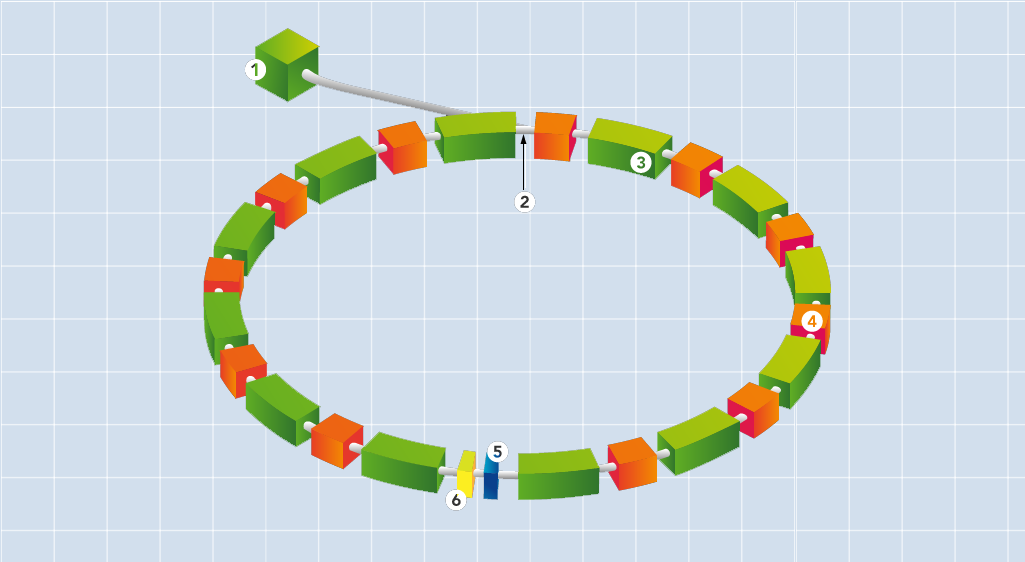About Particle Accelerators
Particle accelerators are essential tools of discovery for particle and nuclear physics and for sciences that use x-rays and neutrons
A particle accelerator is a machine that accelerates elementary particles, such as electrons or protons, to very high energies. On a basic level, particle accelerators produce beams of charged particles that can be used for a variety of research purposes. There are two basic types of particle accelerators: linear accelerators and circular accelerators. Linear accelerators propel particles along a linear, or straight, beam line. Circular accelerators propel particles around a circular track. Linear accelerators are used for fixed-target experiments, whereas circular accelerators can be used for both colliding beam and fixed target experiments.
How a particle accelerator works
Particle accelerators use electric fields to speed up and increase the energy of a beam of particles, which are steered and focused by magnetic fields. The particle source provides the particles, such as protons or electrons, that are to be accelerated. The beam of particles travels inside a vacuum in the metal beam pipe. The vacuum is crucial to maintaining an air and dust free environment for the beam of particles to travel unobstructed. Electromagnets steer and focus the beam of particles while it travels through the vacuum tube.
Electric fields spaced around the accelerator switch from positive to negative at a given frequency, creating radio waves that accelerate particles in bunches. Particles can be directed at a fixed target, such as a thin piece of metal foil, or two beams of particles can be collided. Particle detectors record and reveal the particles and radiation that are produced by the collision between a beam of particles and the target.

1. Particle Source
The particle source provides the particles, such as protons or electrons, that are to be acceleratred
2. Beam Pipe
The beam of particles travels in a vacuum inside this metal pipe. It is important to maintain an air and dust-free environment for the partcle beam to travel unobstructed.
3. Electromagnets
Electromagents steer and focus the particle beam while it travels through the beam pipe.
4. Electric Fields
Electric fields spaced around the accelerator switch from positive to negative at a given frequency, creating radio waves that accelerate particles in bunches.
5. Targets
Particles can be directed at a fixed target, such as a thin piece of metal foil, or two beams of particles can be collided.
6. Detectors
Particle detectors record and reveal the particles and radiation that are produced by the collision between the particle beam and the target.



